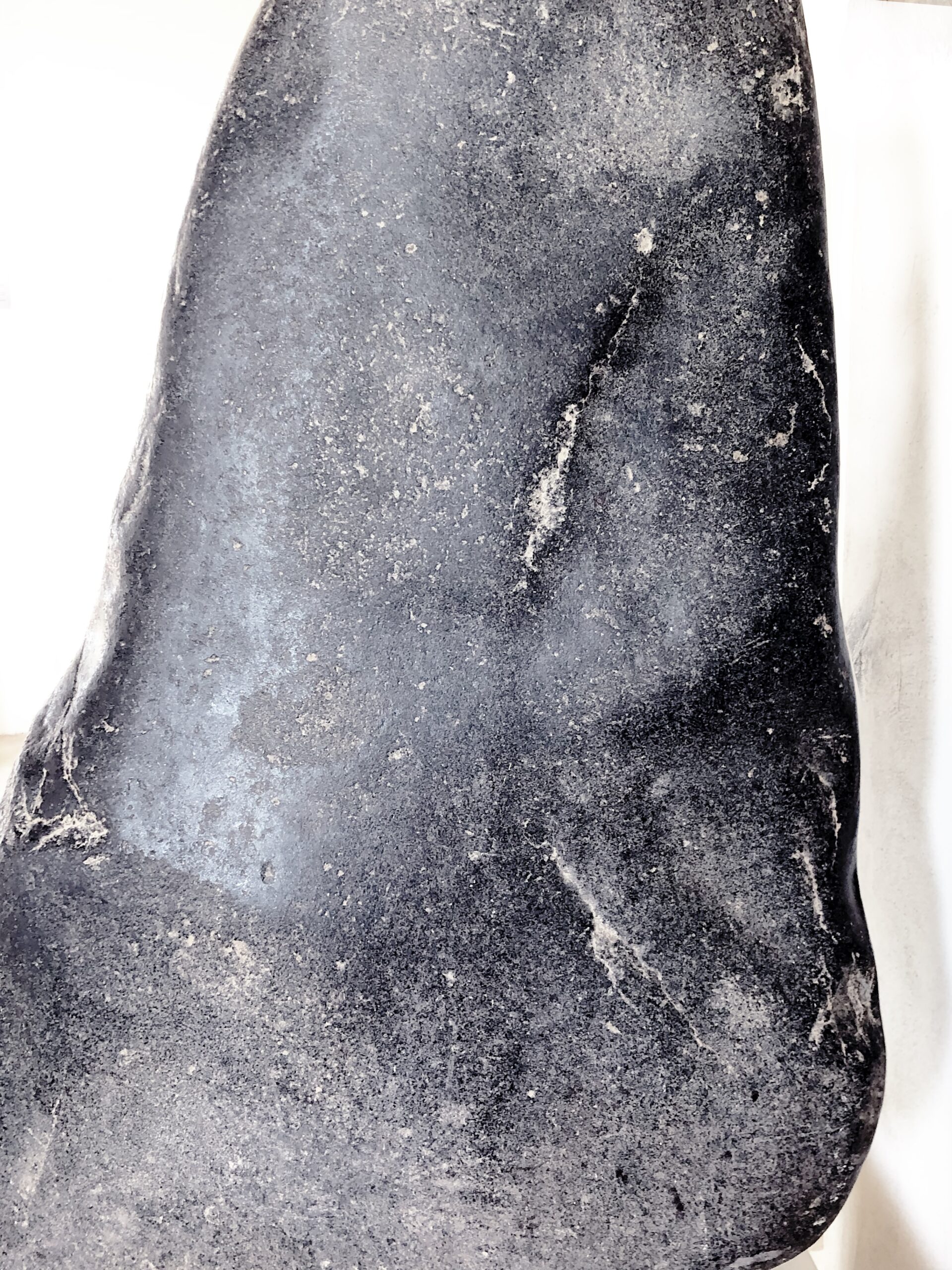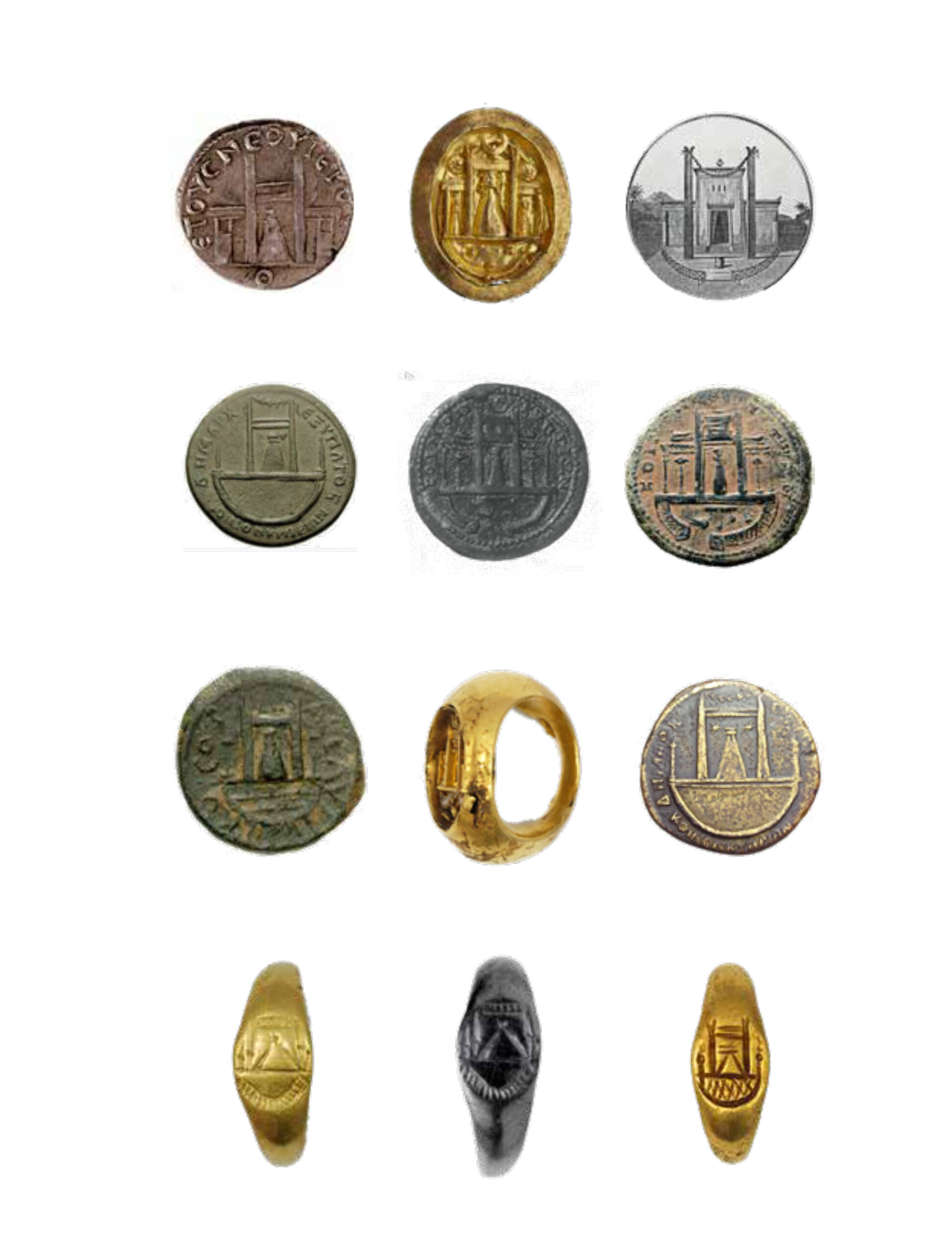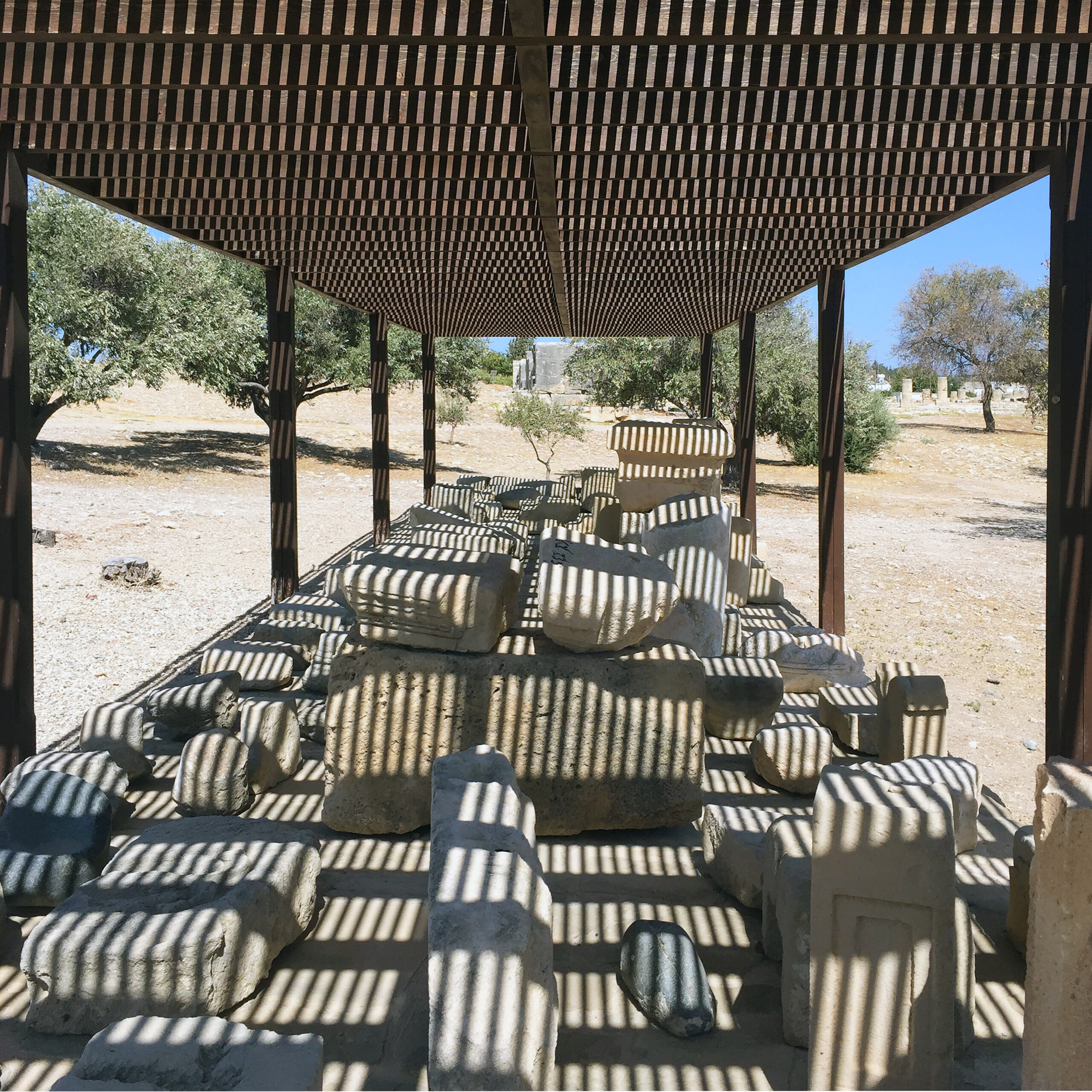THE JOURNEY OF THE AURA OF THE BLACK STONE OF CYPRUS.
2018.
Identical copy of the Black Stone with 3D Print Stratasys F770 3D-Drucksystem hand retouched 120cm x 50cm x 60cm circa Stone virtual copy in VR 3d produced scanning the original Black Stone in Paphos Santuary Documentation.
Description: Indicating aura and value fluctuations of a found stone from neolithic era until today.
Works of art share a parabole of value with all other kinds of object. Ritualistic objects became worthless, tools obsoletes, etc. It can happened that an object received an enormous quantity of symbolic value for a certain time, but when conditions for this value existence change the object loses its status.
But if work of art are objects of a special kind their status change also in a particular way. A tout-fait in Duchamps tradition, start its adventure as simple commodity and became an exceptional one. The journey of the aura of the black stone of Cyprus is based on an investigation about value and aura and include the simple indication of the black stone of Cyprus, the black stone of Cyprus can be also a tout-fait; a ready-made that instead cross time in the direction of the future, leike a blade, extend its been in the direction of a far away past when it was only a gabbro stone between other stones. Its nostalgic look deliver us a new aura, the one of an exhausted object full of echoes.
The project is centered on the unique story of the Black Stone of Cyprus that can be seen as an example of a dynamic fluxus of both aura and value. The cultural projection into the stone in ancient time has been even so strong that a powerful cult arouse around the stone during the Bronze Age. The Black Stone of Cyprus is a 122 centimeter high aniconic black gabbro stone found in the Neolithic period. Following the legend, it was found near the beach of Aphrodite in South Cyprus from a lavic deposit. Worshipped as a holy object, the raw stone was transported to a location that became the Sanctuary of Aphrodite in the archaeological site of Palaipafos (Kouklia). For thousands of years it was touched by thousands of hands during rituals, covered with oil and thus smothened.
The rituals were first related to the cult of the Queen of Cyprus, the Goddess of Cyprus, the Big Mother, then to Astarte and finally to Aphrodite.
The cult of Aphrodite is born indeed around the cult to the black stone. It was presumably the center of the stage of the sanctuary of Palaipafos as documented by Homer, Tacite and depicted on Greek, Roman, and Egyptian coins produced in Cyprus and elsewhere between the first century BC and the beginning of the 3rd century. After the death of Theodosius I in 395 AC, his sons and successors, (Arcadius in the East and Honorius in the West), reaffirmed the prohibition of all pagan cults: the black stone was then buried by the priestesses near the sanctuary.
After almost 1700 years of disappearance the black stone was then rediscovered by archeological researchers: while the exact date of the rediscovery is still controversial, the stone was first mentioned by D.G. Hogarth in 1888. It was found buried/embedded in a late roman mosaic floor but not recognized as the holy stone of Paphos. Its importance was only fully recognized in 1913 during second archaeological excavations by J.F. Myres. The Sanctuary of Aphrodite was one of the most important places of worship in the ancient world and a destination of pilgrimage for centuries until a sudden decay after the Romans forbid non-christian rituals in the Roman colonies. The interaction the Santuary “audience” had with the Black Stone was creative and destructive at the same time: it was sculpted by generations of visitors by repeated touch in order to obtain blessing from the Stone as embodiment of the Goddess. The act of touching here is seen both as a creation and a destruction (see the project When the rising sun 2018 on Gramsci and John Berger). The project is centered on the 4000 years fluxus. The work is presented by historical documentations and 2 artifacts: an identical copy of the Black Stone, produced with 3D Print Stratasys F770 3D-Drucksystem hand-retouched, and an VR 3d virtual copy of the Stone produced scanning the original Black Stone in Paphos Santuary.
During centuries the image of the Black Stone got multiplied by the issue of thousands of coins, the multiplication of the image permit to archeologist to attribuate the identity and the value to the found ( for the second time) black stone.
The multiplication and reproduction of the image of the stone during the Greek and Roman period got poorly renewed around 50-60 years ago with the realisation of a cast (with the idee to show the reproduction of the stone in the Museum of Paphos).
For technical reasons the cast failed and since then has been abandoned/stocked in the courtyard of the manor-house on the grounds of the sanctuary near Palaipafos together with other archeological artifacts. The Black stone continues to be a factory of simulacra, reproduction, copies and images.
The specificity of the failed cast consists into be a failed copy of an original, since then the cast started to degenerate because of rain and sun and started to produce its own new shapes and its own aura.


